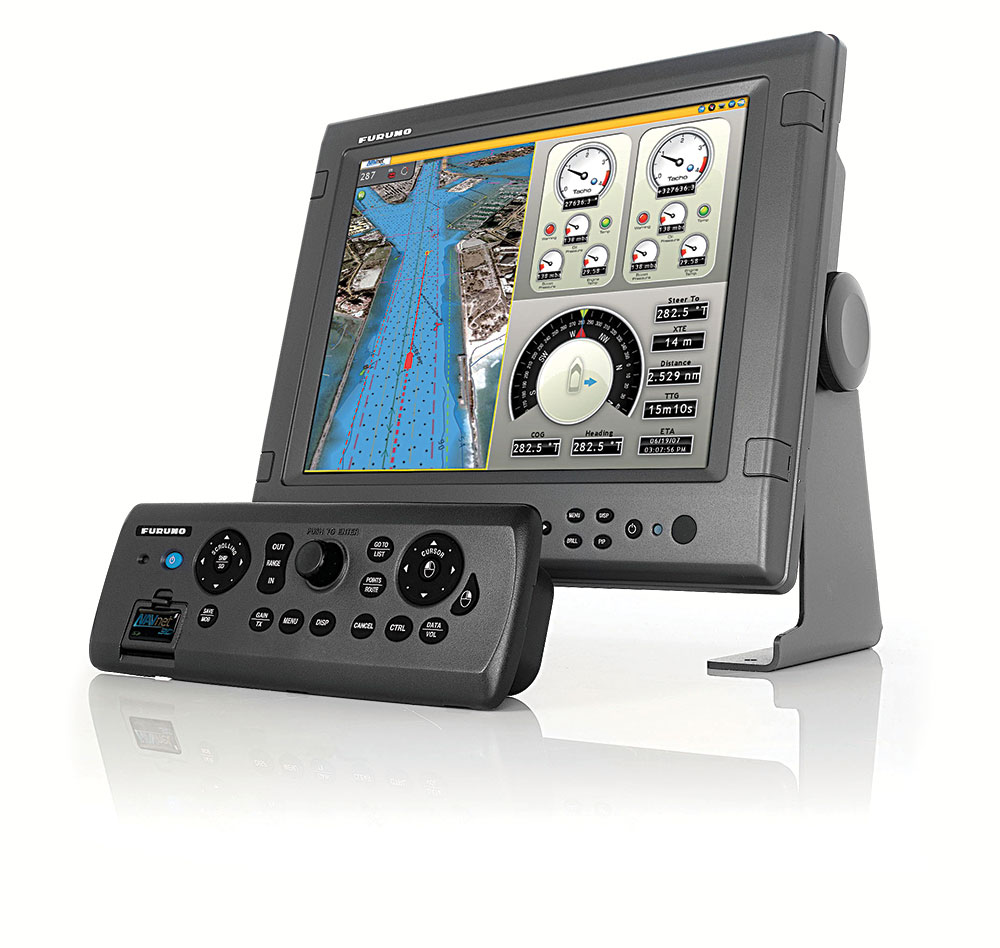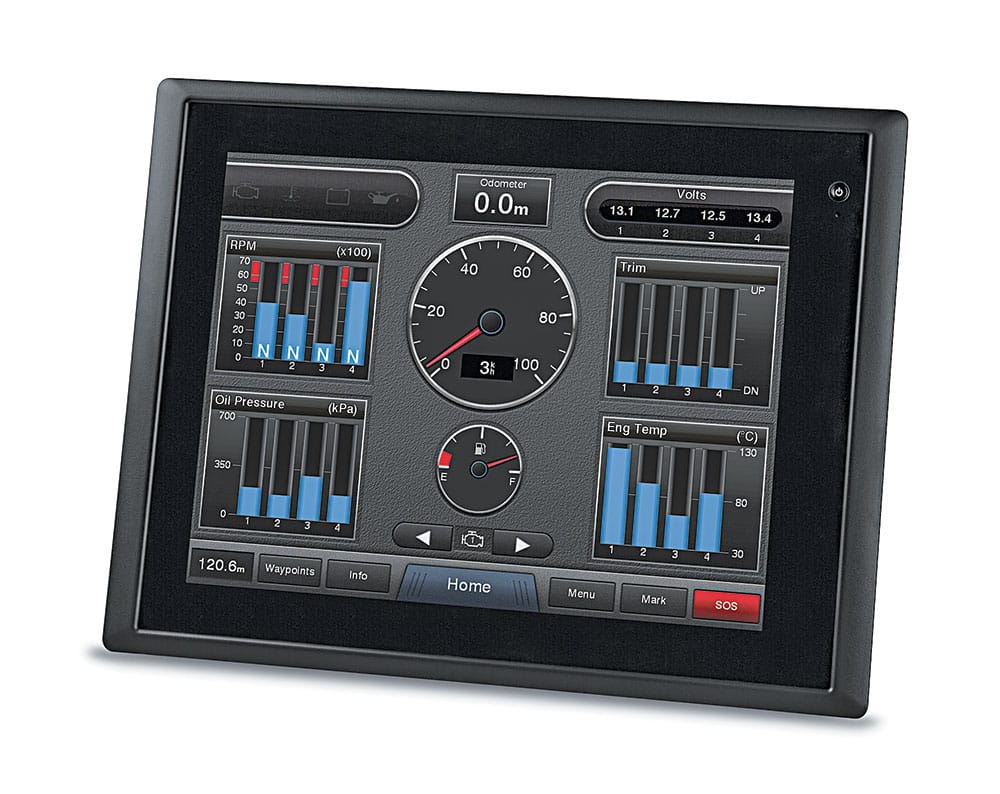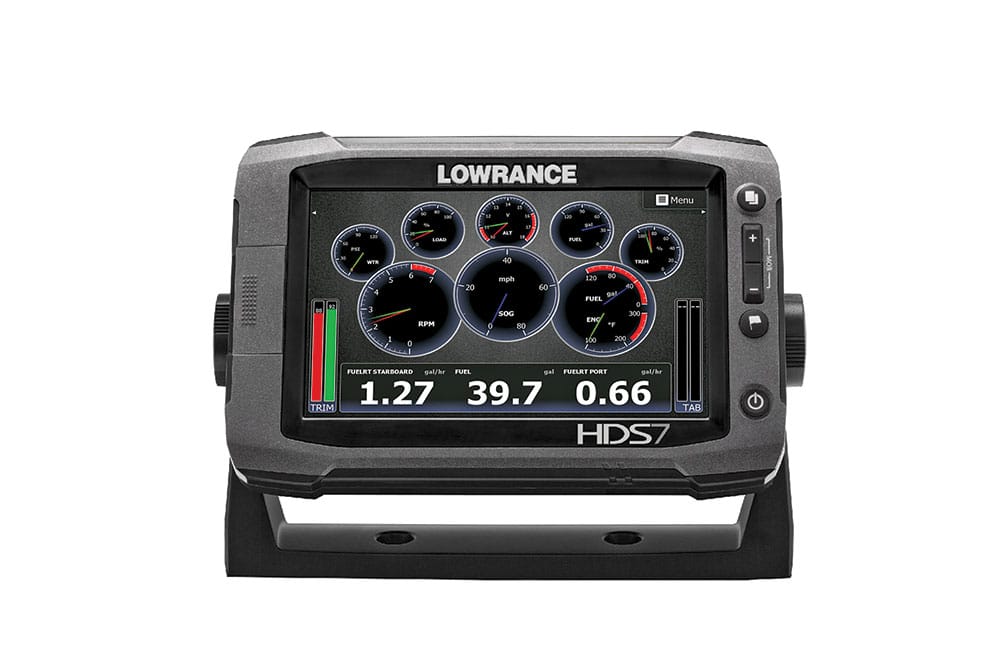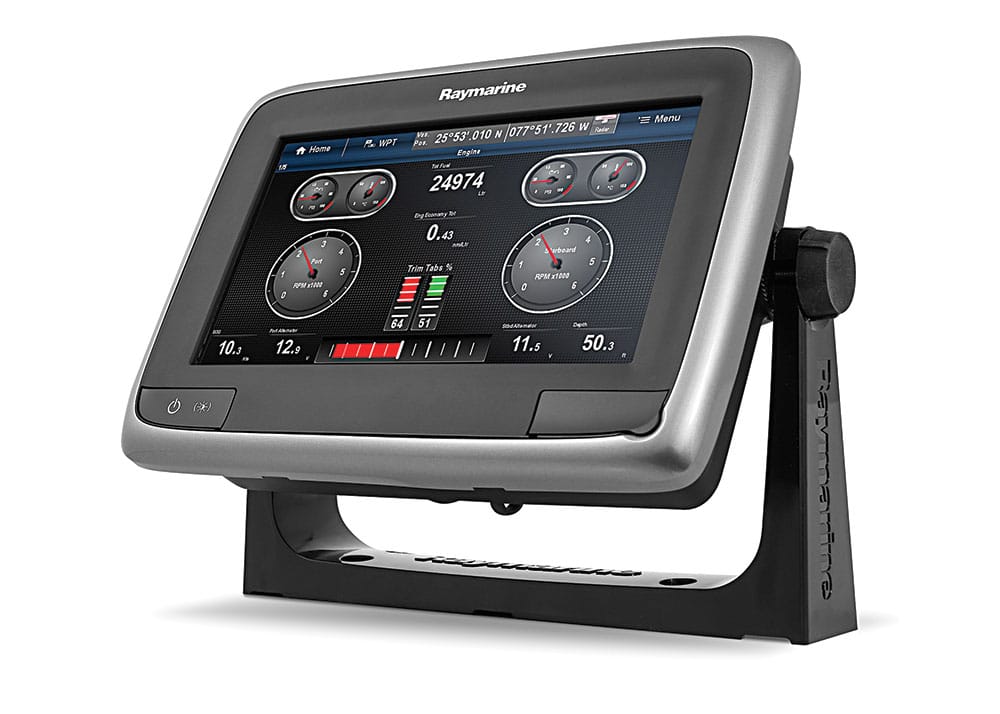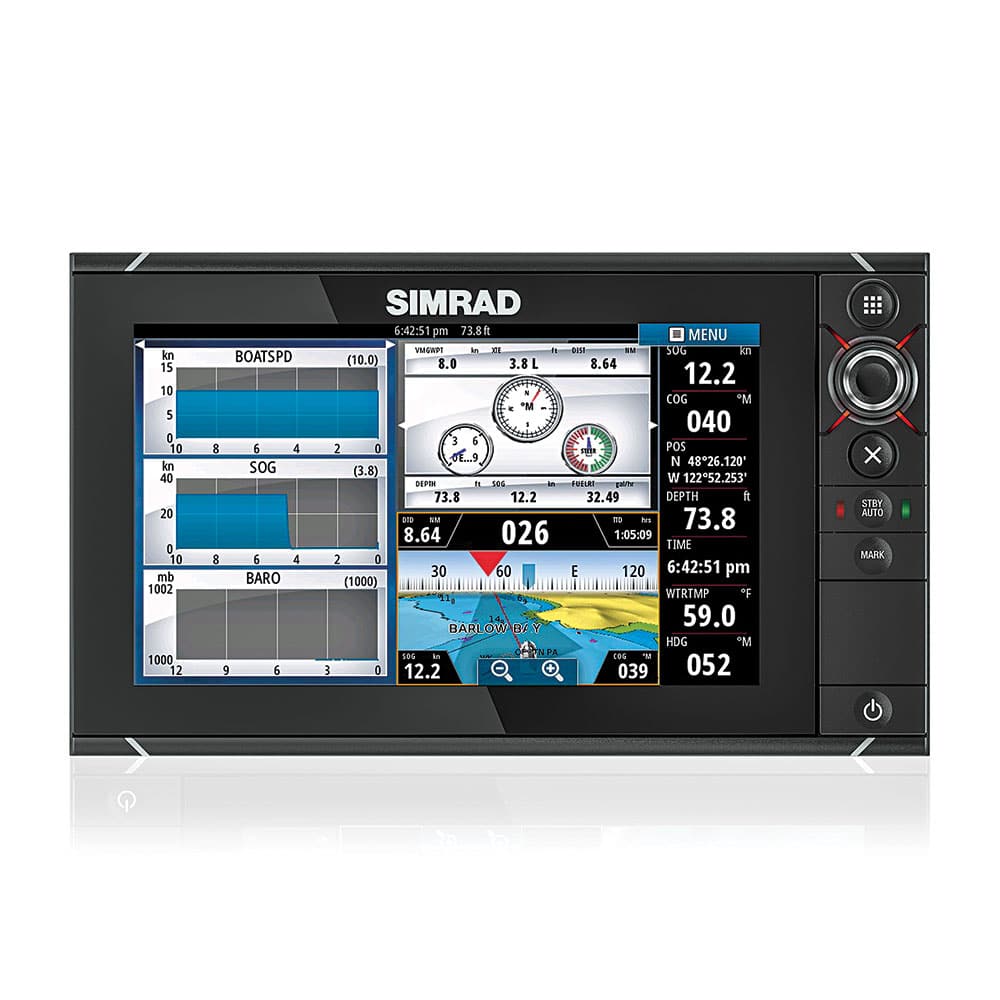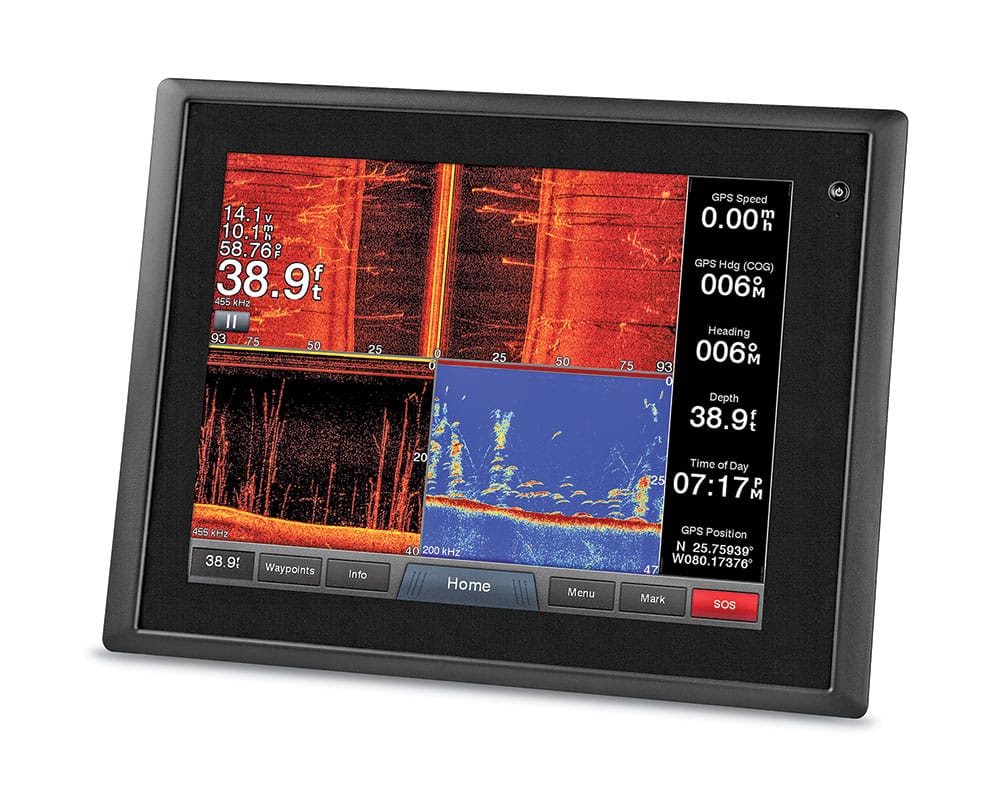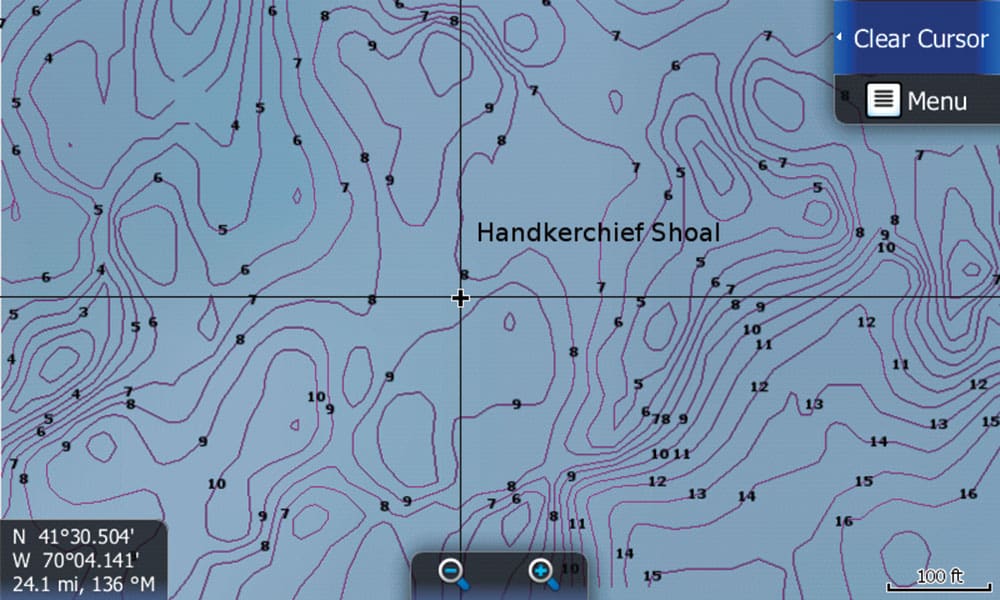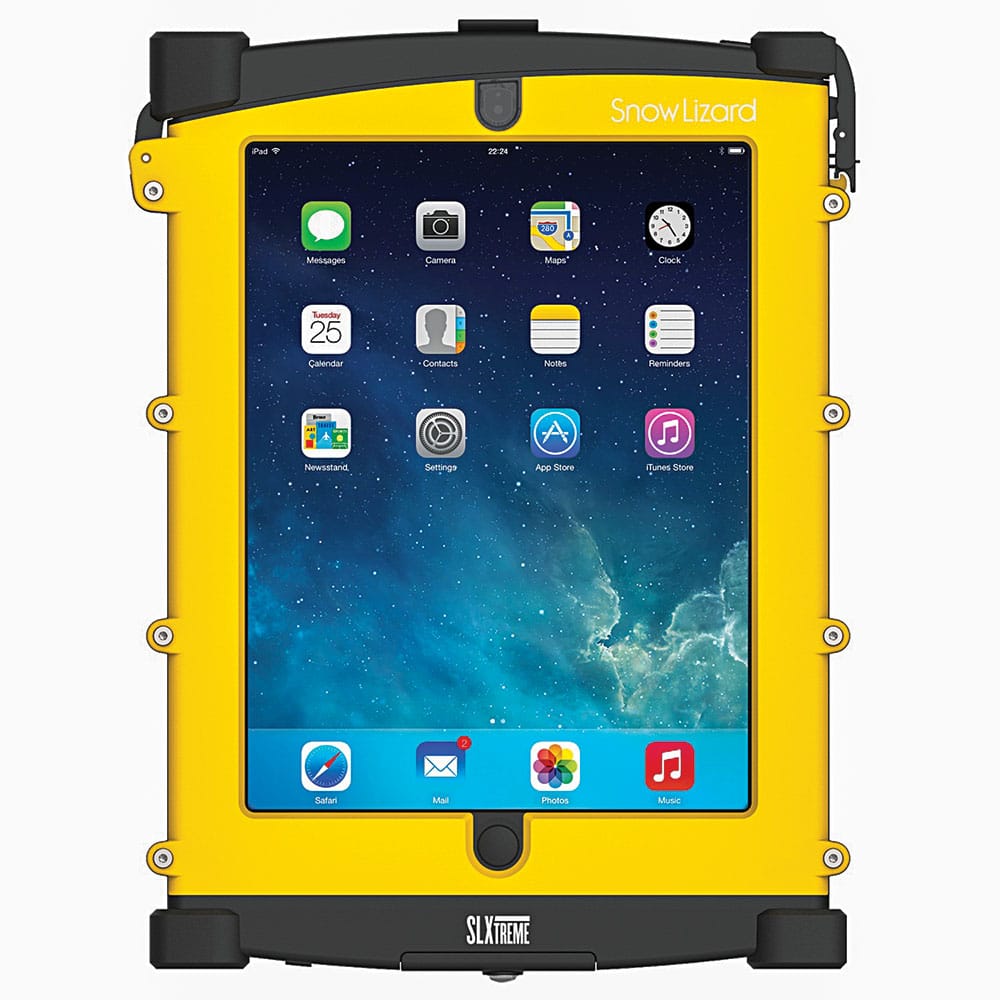Climb aboard a new saltwater fishing machine at a boat show or dealership and you’ll likely notice that -something is missing. Gone from many new boats is the traditional gauge cluster consisting of tachometer, speedometer, fuel, engine temperature, outboard trim and other round analog instruments.
Instead, you’ll often find multi-function displays (MFDs) with LCD screens that read digital electronic information from the engines. Most marine engine companies now provide their own MFDs — many of them relatively small — to monitor motors. This includes engine brands such as Caterpillar, Evinrude, Honda, Man, Mercury, Suzuki, Volvo Penta, Yamaha and Yanmar.
You can also read the same engine information on larger touch-screen, third-party MFDs from marine electronics companies such as Furuno, Garmin, Humminbird, Lowrance, Simrad and Raymarine. Putting the information up on a full-color touch-screen as big as Furuno’s NavNet TZtouch 14-inch monitor, Raymarine’s new E Series HybridTouch 14-inch Widescreen or Simrad’s NSS evo2 16-inch display makes it easier to see the engine functions, and touch-screen capability makes it simple and fast to access the information.
This functionality is not limited to new boats. If you have a motor equipped with a digital ECU (engine control unit), it is relatively simple to connect it to an MFD, possibly the same display you now use to view the chart plotter, fish finder and radar. Similar in concept to the glass cockpits used in airplanes, this retrofit can supplant nearly all analog gauges on your boat. This frees up space at the helm for other equipment, such as a second MFD that you might then dedicate strictly to sonar functions to find fish better.
**NMEA 2000 **Connection****
The key to such a marine electronics retrofit is an NMEA 2000 digital connection. This usually consists of a single, digital backbone cable networked with the ECU and other sensors via plug-in components, such as T-connectors, drop lines and multiport boxes. Together, these send, receive and share information digitally with one or more MFDs.
With NMEA 2000, cable connections are all plug-and-play, meaning that you should not have to cut and splice any wires. Perhaps the toughest part of this retrofit is running the appropriate cable from the engine to the helm, a process that could require replacing the existing engine wire harness with a more up-to-date harness with digital connections and couplers. You can verify this with the manufacturer of your engines or turn the job over to a qualified marine electronics shop.
Once the proper connections are made, the MFD should automatically recognize the new data source after you power up the electronics and turn on the motors, enabling you to display engine parameters via a menu selection.
Vital Signs
Such systems allow you to monitor a host of engine vital signs. This includes basics such as rpm, oil pressure, engine temperature, coolant temperature, turbo boost, fuel pressures and trim and tilt. You can view transmission data such as oil temp and pressure on an MFD, but in some cases, an analog-to-digital interface is required to translate the data to an NMEA 2000 signal.
By connecting your marine engine to an MFD, you are also adding a fuel management component that lets you read fuel consumption and fuel remaining, as well as fuel economy in real time. This helps save on fuel costs, but just as importantly, it replaces the old-school analog fuel gauge — often considered so notoriously inaccurate as to be virtually useless. Having an accurate measurement of fuel allows you to confidently venture farther offshore in pursuit of fish.
With a full-size MFD, you choose the data you want and exactly where you want to view it. Engine data can be viewed in a variety of ways, including alphanumerically, icons resembling conventional round engine gauges or in bar-graph form. You can also split the screen to view engine data in one pane, while viewing other key features such as the chart plotter, fish finder or radar in other panes.
These systems simplify the process of adding instrumentation at a second station in, say, a fishing tower. You only install and connect another MFD via NMEA 2000 plug-and-play cabling, negating the need to add a gauge cluster and extra wiring aloft.
Compatibility Issues
Obviously, both your MFD and your boat engines need to be NMEA 2000 compatible, but virtually all of today’s marine electronics and marine engine brands use this communication standard.
Some engine companies had maintained proprietary systems that restricted your ability to display information on a third-party MFD, but that practice seems to be melting away. Until recently, for example, the only MFDs compatible with Mercury Marine engines were Merc’s VesselView units. However, you can now display Mercury engine functions on certain Simrad MFDs through a cable connection with a VesselView display.
What if your engine is not NMEA compatible? There are aftermarket products that convert certain conventional analog engines to an NMEA 2000 data output. One is the Maretron J2K100 J1939 to NMEA 2000 Gateway ($395) and the other is the Actisense EMU-1 Engine Monitoring Unit ($495).
Today’s large, touch-screen MFDs are amazing, offering you the ability to easily keep track of virtually all navigational features, fish-finding tools and vessel systems on your fishing boat, including one of the most important: your propulsion system.
